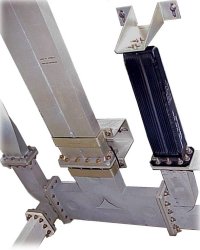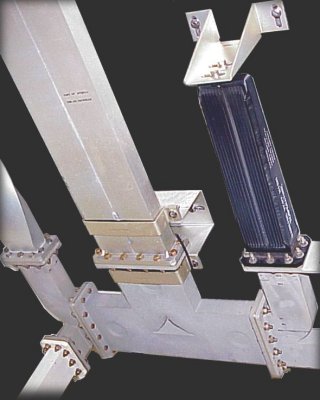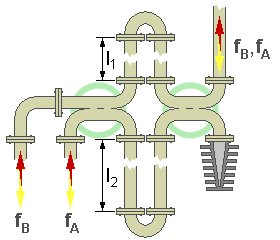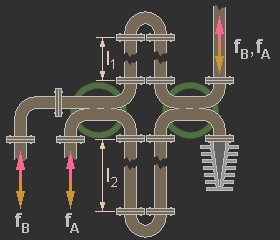Diplexer/Filter


Figure 1: Part of the diplexer in an
AN/TPN-24- Surveillance Radar
Pseudo Coherent but multi-frequency radars with multiple magnetron oscillators as transmitters (POT) need a diplexer to work effectively.
The diplexer is a crossover, it has the task of decoupling two channels with different frequency (ie two transmitters and two receivers) so that these both could be run at a single antenna. (In contrast, a duplexer switches signals of nearly the same frequency!) The transmission power of each transmitter has to be directed to the antenna, and the respective echo signals are to distributed to the corresponding receiver.
Particular advantages of a diplexer made of waveguide sections are: the high performance strength and on the other is also possible a simple frequency change by changing the lengths of the phasing lines.


Figure 2: Prinziple of a diplexer
The diplexer consists essentially of two -3 dB couplers and two different long lines of waveguide sections. The path difference Δl = l2- l1 of the two waveguide sections must be choosen that arises an optimum of impedance matching for both frequencies. In practice, the detour lines are dimensioned with a very large multiple of the wavelength Then smaller phase differences are multiplied and the filter is replaced by a narrower passband. Unfortunately, the diplexer will be permeable but also for several other frequencies thereby. These unwanted frequencies need to be suppressed by an additional filter.
Another reason for the use of a length of multiple wavelength is the reducing of the installed frequency distance between both frequencies. This frequency spacing is specified constructively and cannot be optimized by adjustment here.
Especially for the AN/TPN-24 radar this adjustment is very critical, since the intermediate frequency is also close to the frequency difference between the both transmitters. Therefore the StaLo of the “B” receiver sometimes may interfere with the receiver of the “A”-frequency. If there is no other way to suppress these internal interferences, then the STALO (operating at a lower frequency than the receiver adjust normally) can be retuned to as "high-lying" oscillator. But then also the motor-actuated AFC must be reversed (two pins of the motor voltage must be resoldered). However, this is a technical modification, which is usually not allowed.
